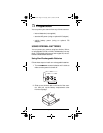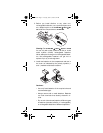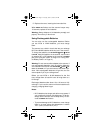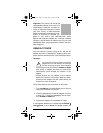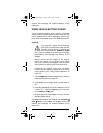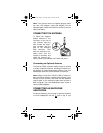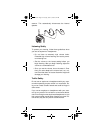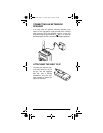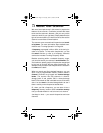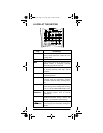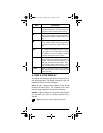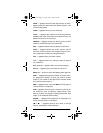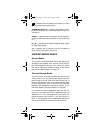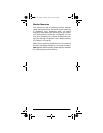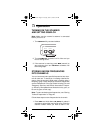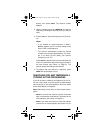
18 About Your Scanner
ˆ
About Your Scanner
We use a few simple terms in this manual to explain the
features of the scanner. Familiarize yourself with these
terms and the scanner’s features, and you can put the
scanner to work for you right away. Simply determine the
type of communications you want to receive, then set the
scanner to scan those communications.
The scanner scans conventional frequencies and
trunk-
ed systems
. For more information about trunked trans-
missions see “Trunking Operation” on Page 38.
A
frequency,
expressed in kHz or MHz, is the tuning lo-
cation of a station. To find active frequencies, you use
the
search
function or refer to a frequency reference
such as the included
Trunking Frequency Guide
.
Besides searching within a selected frequency range,
you can also search your scanner’s
service banks
. Ser-
vice banks are preset groups of frequencies categorized
by the type of services that use those frequencies. For
example, many amateur radio frequencies are located in
the
HAM
service bank.
When you search and find a desired frequency, you can
store it into a programmable memory location called a
channel
. Channels are grouped into
channel-storage
banks
. The scanner has 500 channels in channel-
storage bank A and another 500 in channel-storage
bank B. Each bank of 500 is divided into ten 50-channel
sets. You can
scan
the channel-storage banks to see if
there is activity on the frequencies stored there.
Or, when you find a frequency, you can store it into a
temporary
memory location called a
monitor memory
until you decide whether or not to move it to a channel.
Just keep in mind — you
search
frequencies and
scan
channels.
20-524A.fm Page 18 Tuesday, June 27, 2000 3:41 PM



